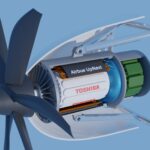
Breaking News
 James O'Keefe: My entire speech at AmericaFest 2025. We're not stopping. Join us to expose..
James O'Keefe: My entire speech at AmericaFest 2025. We're not stopping. Join us to expose..
 U.S. vs. Chinese Military Comparison – Focus on Asia-Taiwan Scenario
U.S. vs. Chinese Military Comparison – Focus on Asia-Taiwan Scenario
 DoJ Sues Four More States for Failing To Produce Voter-roll Data
DoJ Sues Four More States for Failing To Produce Voter-roll Data
 World's Largest Aviation Giant Abandons Google Over Security Concerns
World's Largest Aviation Giant Abandons Google Over Security Concerns
Top Tech News
 Perfect Aircrete, Kitchen Ingredients.
Perfect Aircrete, Kitchen Ingredients.
 Futuristic pixel-raising display lets you feel what's onscreen
Futuristic pixel-raising display lets you feel what's onscreen
 Cutting-Edge Facility Generates Pure Water and Hydrogen Fuel from Seawater for Mere Pennies
Cutting-Edge Facility Generates Pure Water and Hydrogen Fuel from Seawater for Mere Pennies
 This tiny dev board is packed with features for ambitious makers
This tiny dev board is packed with features for ambitious makers
 Scientists Discover Gel to Regrow Tooth Enamel
Scientists Discover Gel to Regrow Tooth Enamel
 Vitamin C and Dandelion Root Killing Cancer Cells -- as Former CDC Director Calls for COVID-19...
Vitamin C and Dandelion Root Killing Cancer Cells -- as Former CDC Director Calls for COVID-19...
 Galactic Brain: US firm plans space-based data centers, power grid to challenge China
Galactic Brain: US firm plans space-based data centers, power grid to challenge China
 A microbial cleanup for glyphosate just earned a patent. Here's why that matters
A microbial cleanup for glyphosate just earned a patent. Here's why that matters
 Japan Breaks Internet Speed Record with 5 Million Times Faster Data Transfer
Japan Breaks Internet Speed Record with 5 Million Times Faster Data Transfer
Airbus and Toshiba team up to create superconducting aircraft motor

Of all the options for making aircraft emissions-free that doesn't include just turning them all into gliders, hydrogen is the most promising because it combines a relatively high energy density with the ability to reduce emissions to little more than water. However, hydrogen takes up a lot of room for the available energy compared to aviation fuel, and the only practical way to handle it is as a cryogenic liquid cooled to below -253 °C (-423 °F).
In hydrogen-powered aircraft, The idea is that the hydrogen is fed into a fuel cell that generates electricity that either charges battery banks or drives an electric motor directly. However, there's still a weight problem because electric motors powerful enough to be practical for conventional-sized aircraft are very heavy, with a poor power-to-weight ratio.
To overcome this, both Airbus, through its Airbus UpNext subsidiary, and Toshiba, through its Toshiba Energy Systems & Solutions Corporation energy arm, have been looking at how to use the liquid hydrogen for the fuel cells to cool a cryogenic superconducting electric motor before going to the fuel cell.
When certain materials are cooled below a certain temperature, like that of liquid hydrogen, they become superconducting. In other words, the material's electrical resistance drops almost to zero and can hold an electrical current indefinitely. This allows for much more powerful and efficient magnets at the heart of CAT scanners, particle accelerators, some power transmission networks, and, wait for it, electric motors.
In fact, Airbus claims that a superconducting motor is over three times lighter than a conventional system and has a 97% powertrain efficiency rating. This makes for a lot more power coming out of a much smaller, lighter package – something obviously attractive for use on an aircraft.

 Advanced Propulsion Resources Part 1 of 2
Advanced Propulsion Resources Part 1 of 2

